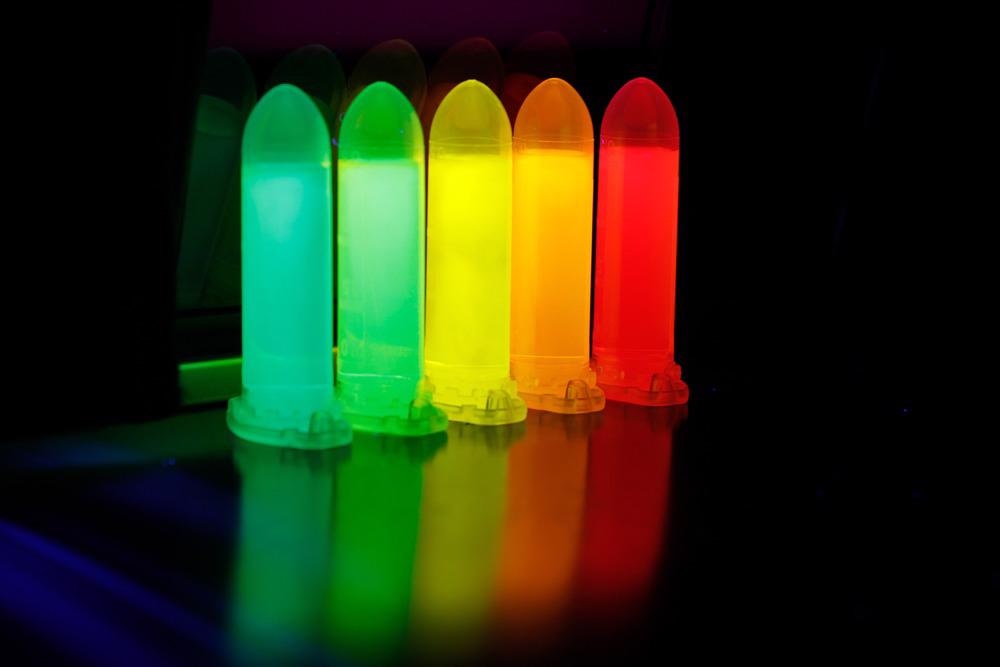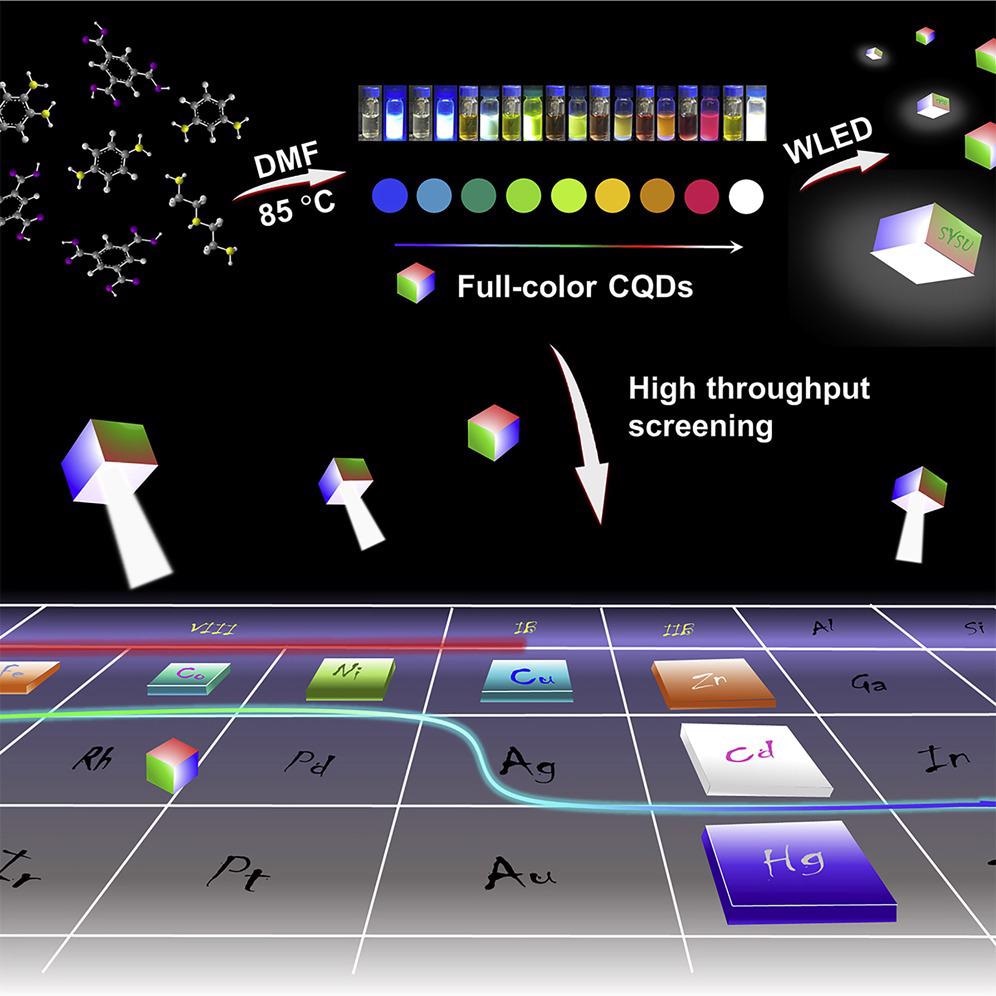In recent years, carbon quantum dots (CQDs) have attracted significant attention as a prospective material in fabricating light-emitting diodes (LEDs), molecular sensors, and other state-of-the-art industrial applications. An article published recently in the journal iScience focuses on producing high-quality full-color carbon quantum dots (CQDs) under exceptionally low pressure and temperature.

Study: High-quality full-color carbon quantum dots synthesized under an unprecedentedly mild condition. Image Credit: Dzmitry Melnikau/Shutterstock.com
Importance of Carbon Quantum Dots (CQDs)
Carbon quantum dots (CQDs), a novel type of carbon nanoparticles, have emerged as potential rivals to traditional semiconductor quantum dots due to their superior optical absorption, chemical resistance, low toxicity, and ease of manufacture. CQDs are quasi-spherical carbon nanoparticles made up of crystalline and amorphous carbon bases.
CQDs are employed in a variety of sectors, including bioimaging, medical diagnostics, biomedicine, environmental sensing, electrocatalysis, and optoelectronic devices. Surface characterization and surface passivation can readily modify the physicochemical features of CQDs.
The oxygen functional groups present on CQDs may be altered depending on the synthesis technique to provide remarkable fluorescence qualities.
Methods for Fabrication of Carbon Quantum Dots (CQDs)
Numerous studies have been conducted to create innovative techniques for the production of highly luminescent CQDs, which can be classed as "top-down" or "bottom-up" techniques.
CQDs are manufactured "top-down" by deconstructing bigger carbon materials that contain many sp2 hybridized carbon molecules, using electrodeposition, laser ablation, and other energy-consuming techniques.
High temperature, high pressure, and powerful oxidizing reagents are highly imperative for the "bottom-up" production of CQDs from small molecular precursors to carbonize the sp3 carbon to carbon materials. Thus, in "bottom-up" approaches, hydrothermal and solvothermal processes are extensively utilized.
Limitations of Previously Used Methods
Aside from the significant energy usage in these techniques, the extreme synthesizing settings raise questions about the methods' safety and lower productivity by partly converting the precursors into flammable by-products.
Furthermore, the extract utilized to make the CQDs must be free of contaminants. The introduction of contaminants to the extract has a significant impact on the fluorescing characteristics of CQDs. When these dots are employed for applications such as heavy metal ion detection, it is challenging to understand the process involved in the presence of any contaminant.
As a result, introducing synthetic techniques for CQDs that are energy-efficient, secure, and resourceful is still necessary. These unique technologies would be very useful for boosting the use of CQDs in the industry by avoiding sophisticated manufacturing operations and high energy consumption.

Image Credit: Tong, Y.-J. et al. (2022).
A Novel Mild Condensation Strategy for Development of CQDs
The researchers employed a moderate condensation technique to create high-quality full-color CQDs in this work. The acidic solution was 1,3,5-benzene tricarboxylic acid (BTCA), which possesses just sp2 carbon, while the basic solutions were diethylenetriamine (DETA) and other phenylenediamines (PDA) compounds.
In contrast to the hydrothermal and solvothermal processes, which depend on high temperature and pressure, the suggested one-pot approach for CQD manufacturing was carried out at a relatively low temperature of 85°C and nearly ambient pressure (about 1.88 bar).
The influence of the solvents was explored in-depth to acquire the ideal reaction parameters. It was discovered that high-quality and diverse luminescence could only be obtained when N, N-dimethylformamide (DMF) was used as the solvent, which could be related to DMF's increased ionic strength.
Important Findings of The Study
The suggested moderate condensation technique produces CQDs with high QYs, high production output, homogeneous luminous centers, and dominating radiative decay pathways. Furthermore, the moderate reaction conditions allowed for a detailed analysis of the CQD nanostructures and condensation paths.
Based on the high-quality CQDs acquired, full-color LEDs and logic gate detectors were created. The results demonstrated that CQDs contained extensive adaptation strategies, providing a great opportunity to build advanced devices for ecological investigation, medical diagnostics, food testing, and other applications.
Prospects of Proposed Strategy for Fabrication of CQDs
This study paves the way for the widespread use of CQDs by presenting an innovative moderate synthesis technique for full-color CQDs. This research also encourages the creation of new moderate synthetic techniques that will make the structures of CQDs completely resolvable in the future, which will be crucial for establishing unambiguous structure-property connections.
Full-color CQDs were produced under moderate circumstances in this work, with an average mass yield of 69.0 percent. It is envisaged that future studies would use advanced structural analysis methods like scanning tunneling microscopy (STM) to better explain the growth process.
Reference
Tong, Y.-J. et al. (2022). High-quality full-color carbon quantum dots synthesized under an unprecedentedly mild condition. iScience. Available at: https://www.sciencedirect.com/science/article/pii/S2589004222006927
Disclaimer: The views expressed here are those of the author expressed in their private capacity and do not necessarily represent the views of AZoM.com Limited T/A AZoNetwork the owner and operator of this website. This disclaimer forms part of the Terms and conditions of use of this website.